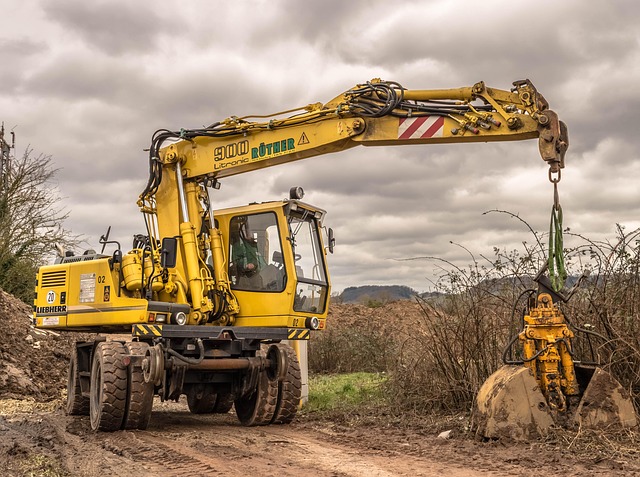GPR technology offers highly accurate and detailed subsurface imaging for utilities like water, gas, electrical, and telecommunications lines. Professional utility mapping services use GPR and GIS to create precise 3D models of underground networks, enhancing safety, streamlining operations, and minimizing excavation hazards. Reliable contractors specializing in subsurface utility mapping provide data-driven decisions, effective maintenance, and accurate utility line mapping.
“Unveiling the secrets beneath our feet, ground-penetrating radar (GPR) emerges as a powerful ally in the realm of utility detection. This innovative technology offers unparalleled insights into the subsurface landscape, revolutionizing how we map and manage critical infrastructure. In this comprehensive guide, we explore the capabilities of GPR for detailed utility detection, its benefits over traditional methods, and advanced 3D GIS mapping techniques.
Furthermore, we delve into choosing the right professionals for accurate underground utility mapping services, ensuring your project’s success.”
Understanding Ground-Penetrating Radar: The Technology Behind Utility Detection
Ground-penetrating radar (GPR) has emerged as a game-changer in the field of utility detection, offering highly accurate and detailed subsurface imaging. This advanced technology enables professionals to create precise maps of underground utilities, such as water, gas, electrical, and telecommunications lines, without excavation. By sending electromagnetic pulses into the ground and analyzing the reflected signals, GPR provides valuable data on the location, depth, and even material composition of buried structures.
In the realm of utility mapping services, GPR is a versatile tool for both professional utility mapping contractors and GIS (Geographic Information System) utility mapping applications. It facilitates accurate utility line mapping and 3D utility mapping, ensuring efficient infrastructure management. The technology’s non-invasive nature makes it an ideal solution for identifying and avoiding damage to critical utilities during construction or renovation projects, thus streamlining operations and enhancing safety.
Benefits of Professional Underground Utility Mapping Services
Professional underground utility mapping services offer a multitude of benefits for various industries and project types. One of the primary advantages is their ability to provide accurate, detailed utility mapping solutions. These specialized contractors utilize advanced technologies like ground-penetrating radar (GPR) and GPS-enabled devices to create comprehensive digital maps of buried utilities. This ensures that construction projects, infrastructure developments, or renovation works can proceed with minimal disruptions and reduced risks of damaging critical underground lines.
By employing GIS utility mapping techniques, these professionals integrate geographic data with utility information, resulting in precise 3D models. This level of detail is crucial for planning and execution, especially in urban areas where complex subsurface utility networks are common. With real-time data and accurate utility line mapping, project managers can make informed decisions, streamline operations, and ultimately save time and money while minimizing safety hazards associated with unnecessary excavations.
Advanced Techniques in Accurate 3D GIS Utility Mapping
In today’s world, accurate and detailed utility mapping services are essential for any comprehensive infrastructure management plan. One of the cutting-edge techniques transforming the field is 3D GIS utility mapping. This advanced method leverages sophisticated technology to create precise digital representations of underground utilities in three dimensions. By integrating ground-penetrating radar (GPR) with Geographic Information Systems (GIS), professionals can achieve unprecedented levels of accuracy in subsurface utility mapping.
The result is not just a map but a comprehensive, accurate utility mapping solution that provides critical insights into the layout and condition of underground lines. This technology is invaluable for various stakeholders, including utility line mapping contractors, engineers, and city planners. It allows them to make informed decisions, avoid costly disruptions during construction projects, and ensure safe and efficient maintenance of critical infrastructure.
Choosing the Right Utility Mapping Contractors for Your Project
Selecting the right utility mapping contractor is a crucial step for any project involving underground infrastructure. With various options available, it’s essential to choose professionals who offer accurate and reliable utility mapping services. Look for companies specializing in subsurface utility mapping and equipped with advanced technologies like ground-penetrating radar (GPR) for precise GIS utility mapping and 3D utility mapping.
When evaluating candidates, consider their experience, certification, and the quality of their equipment. Reputable contractors should provide detailed reports and utilize best practices to ensure safe and effective utility line mapping. Additionally, a good contractor will work closely with your team to understand project specifics and tailor their services accordingly, ensuring a successful outcome for your utility detection needs.
Ground-penetrating radar (GPR) has emerged as a game-changer in the field of utility detection, offering advanced and precise subsurface imaging. By employing professional underground utility mapping services and integrating GPR with 3D GIS technology, accurate utility mapping solutions become achievable. This innovative approach ensures that utility line mapping is efficient, comprehensive, and safe, allowing for informed decision-making during construction projects. When selecting utility mapping contractors, it’s crucial to partner with experts who can deliver high-quality results, ensuring your project benefits from the latest in subsurface utility mapping techniques.
